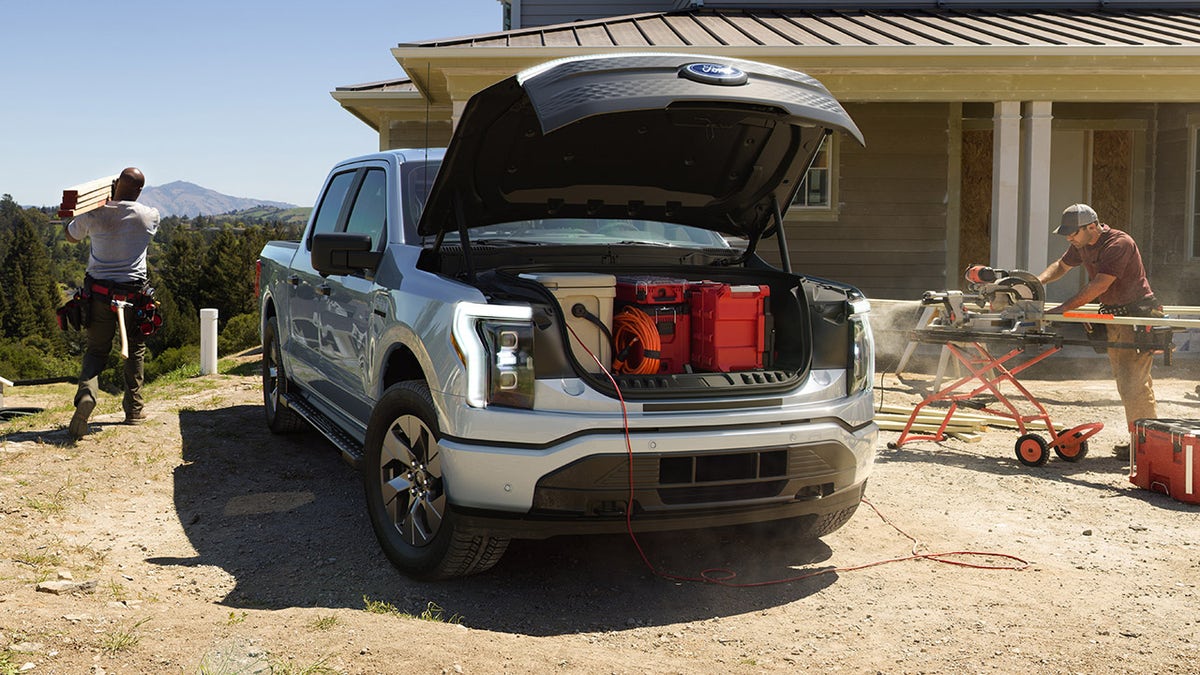
This week, Ford unveiled an electric “lightning” version of its best-selling F-150 truck. Why is this potentially a big deal? This truck is America’s most popular vehicle, and has been for 40 years. Ford sold more than 203,000 F-series trucks in the first quarter of this year, compared with a combined total of 98,000 electric vehicles in the same period.
Perhaps more significantly, electric vehicles have yet to be introduced for the truck market, although Tesla, GM, and start-up Rivian all plan to introduce one. So this vehicle finally fills an important void in the market.
There are two other significant upsides to the vehicle. First, it’s relatively low priced, at least the basic model, at about $40,000. Add in $7,500 in federal tax credits, plus possibly $2,000 in saved fueling costs each year, and the vehicle is competitive with most low-end gas-powered trucks. Of course, the high-end version is almost $90,000.
Another potential upside is the fact that Ford is partnering with solar-and-battery installer Sunrun to allow the vehicle to provide backup power to homes. That means the battery in the vehicle can also power your house during outages, a topic of greater interest after recent outages in California due to wildfires and extreme heat and in Texas due to record cold. Automakers have otherwise been reluctant to provide this customer access to the vehicle’s batteries, out of concern over impact to battery life and potentially, at least for Tesla, due to its possible negative impact on sales of their stationary batteries (the PowerWall).
This added home-backup feature could help jump start competition among EV automakers to allow vehicle batteries to power buildings, which would be a good thing. It taps into an additional benefit of EVs, so consumers can assume they’re not just buying a car but a home generator. It also can help build in society-wide resilience to extreme weather and potentially help reduce grid emissions if people power their homes off the vehicle during times of electricity supply constraints that might otherwise be met by dirty power.
But two concerns remain with the F-150. First, some customers buy trucks to haul heavy stuff. But these big loads can greatly reduce battery range. Ford is trying to be transparent in calculating how weight will impact range. But given the lack of public fast-power charging infrastructure, will this inhibit sales? Truck buyers may not want to wait around 30 minutes to repower the vehicle every 100 miles, if they can even conveniently find a charging station.
Second, while the home battery backup option is intriguing, will it become functionally impractical for most consumers, if it requires expensive upgrades to building electrical panels? The truck power will require at least 80 amps of available capacity on a home service box, but most homes have between 100 and 200 amp capacity to start. So there may be little extra capacity available for wiring in a load of that size, without a costly upgrade.
We’ll have to wait and see, but it’s encouraging that a new type of electric vehicle model is now on the market. Especially one that can appeal to a much broader range of consumer, such as those in conservative states that have historically been anti-EV and generally opposed to clean energy technology. Yet it’s just the tip of the iceberg on electric trucks, as Ford will soon find itself competing head-to-head with Tesla, Rivian and GM in this lucrative e-truck market.
But at least one consumer already seems sold on the electric F-150. Here’s President Biden taking a spin on Ford’s test track this week:


